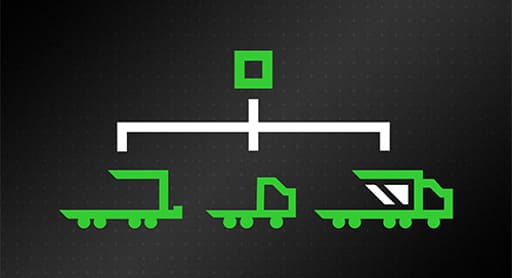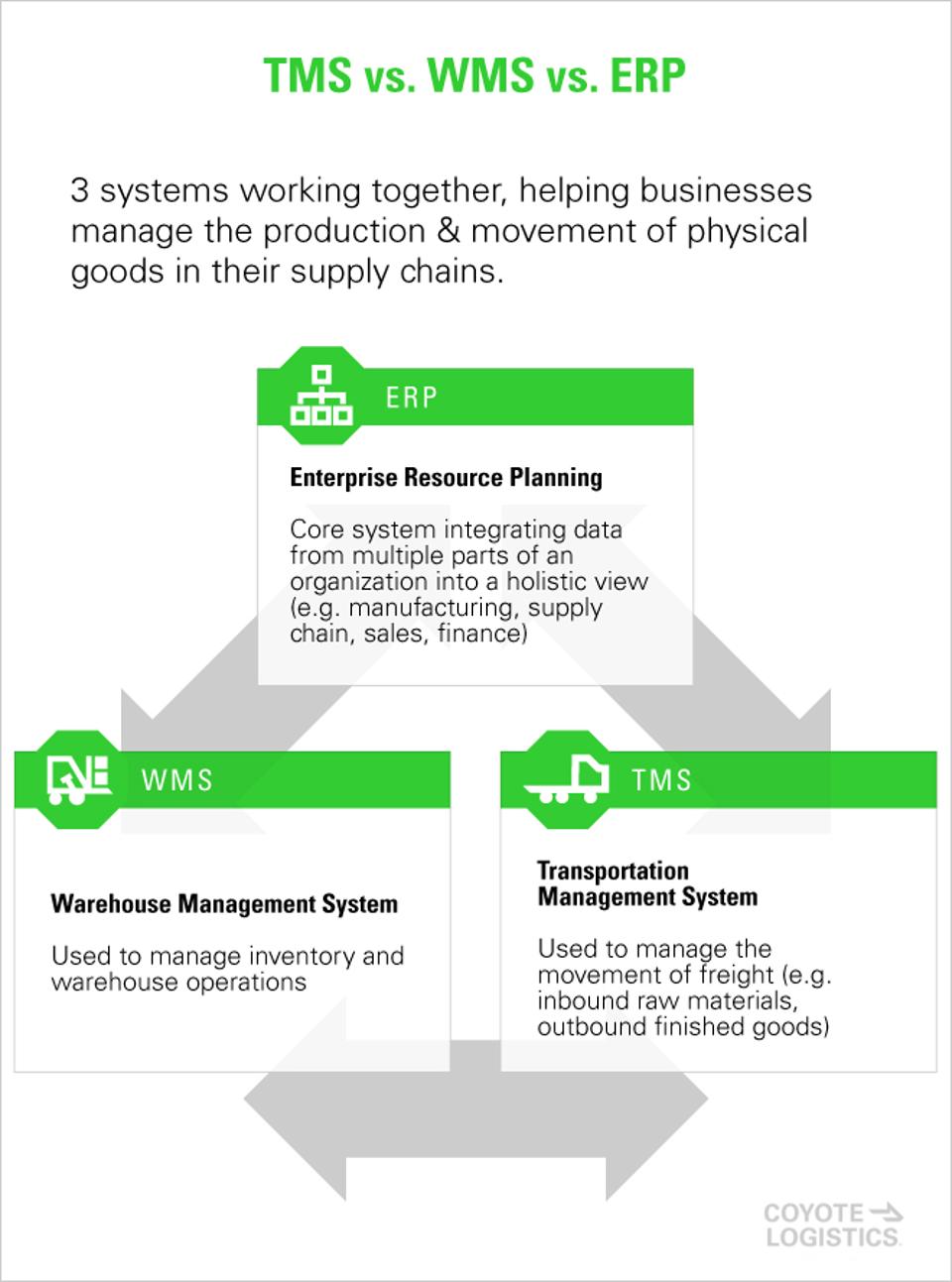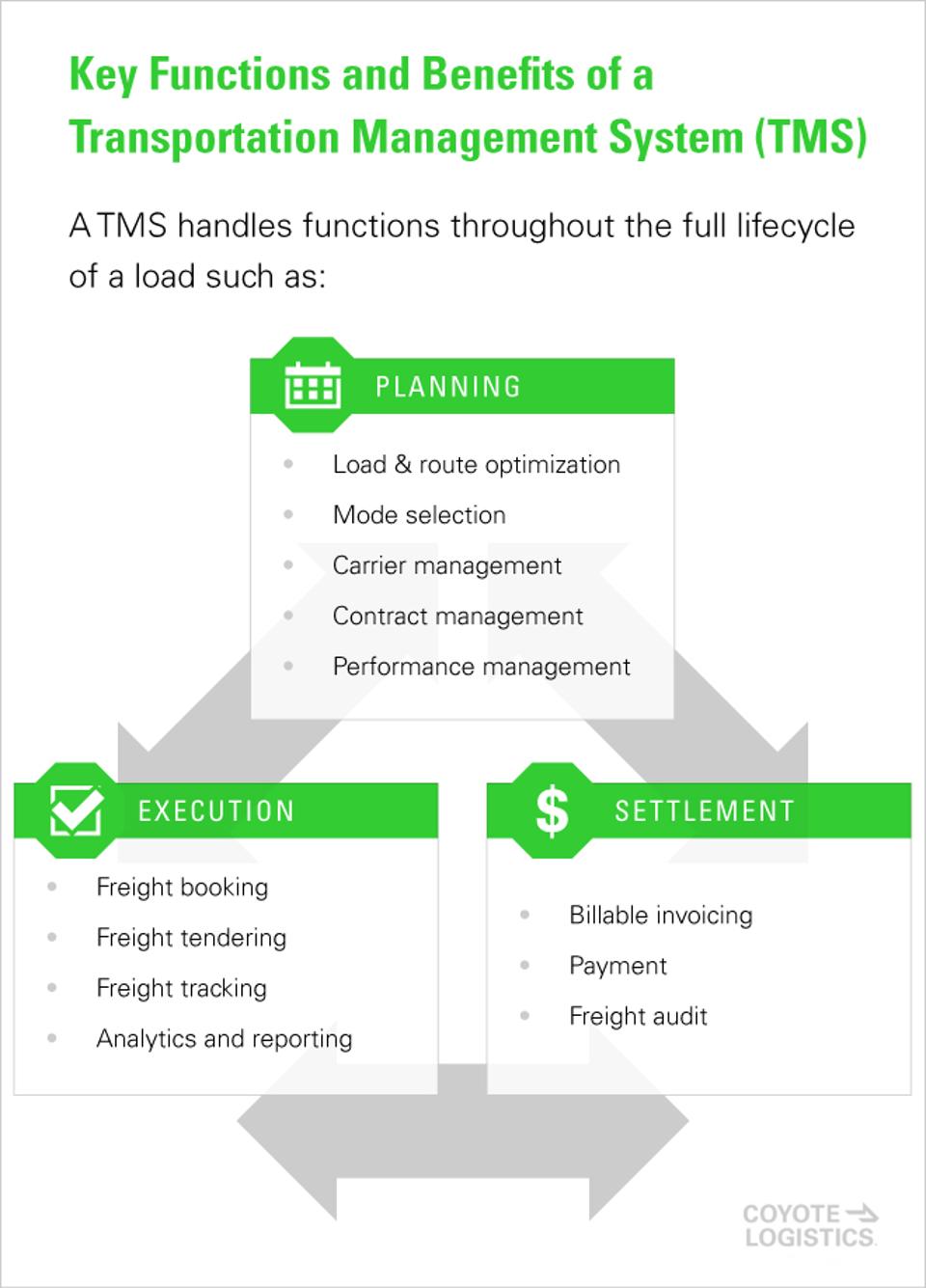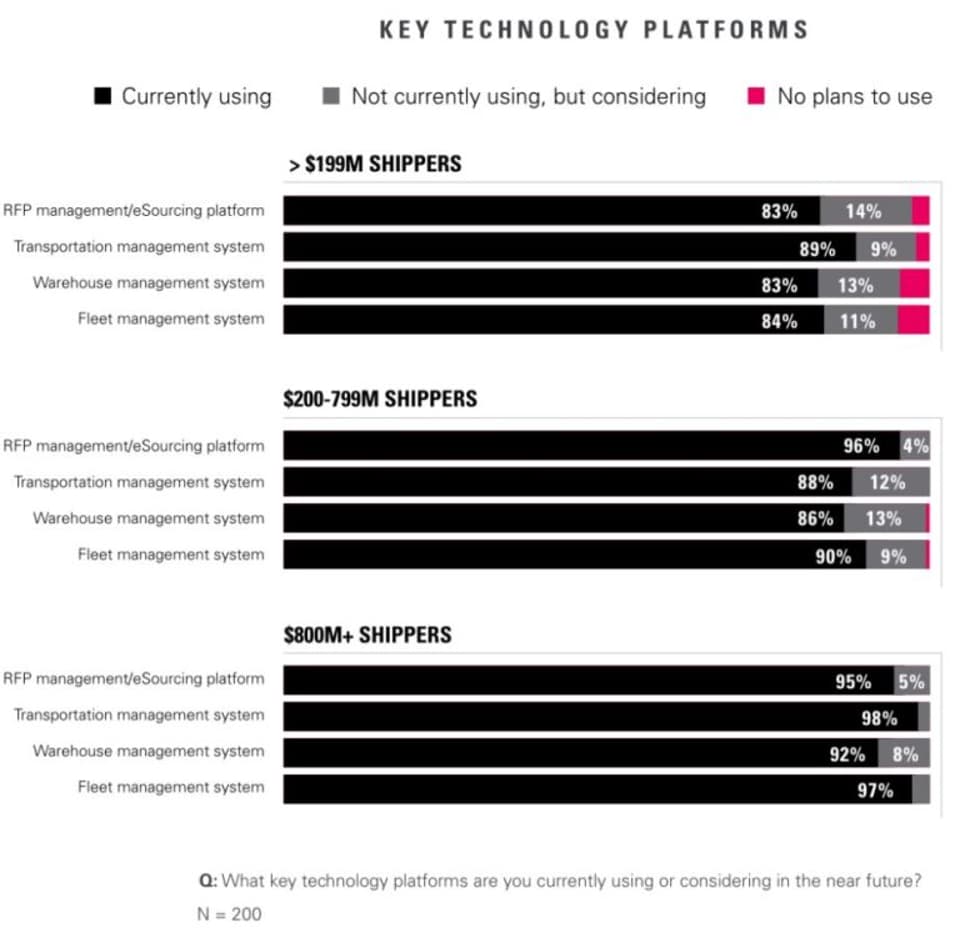A Beginner’s Guide to Transportation Management Systems

Shippers, regardless of size, need to keep tabs on their supply chain. Without a clear, consolidated view, it’s impossible to see what is working well and where they need to address poor performance.
The most effective (and common) way that shippers gather crucial data and gain network visibility is by using a transportation management system, commonly referred to as a TMS.
In this post, we’ll cover all the basics about this core logistics and transportation technology, including the difference between a TMS and WMS, the core functions of a TMS and how to choose the right one for your business.
What is a Transportation Management System TMS?
A TMS is a digital tool (or software program) that companies use to effectively manage their logistics and transportation functions.
A TMS centralizes and organizes transportation data, allowing companies to:
- Plan and forecast network needs
- Optimize routes
- Manage carriers
- Execute and track shipments
- Automate processes (like load booking and tendering)
- Handle payment and settlement
- Report on network KPIs.
An effective TMS provides shippers visibility into both their day-to-day operations and a bird’s-eye-view of their overall network performance.
What’s the Difference Between a TMS and a WMS?

A Warehouse Management System (WMS) is another common digital tool (or software program) that helps shippers control their inventory, organize warehouse and distribution center operations, and manage order fulfillment.
While a WMS deals with the control of freight while it’s on-site at the shipper’s facility, a TMS deals with the movement of freight to and from their facilities.
Some companies use a WMS to manage transportation, and some use a TMS to manage their warehouse, but often they are unique systems.
Both a TMS and WMS are typically integrated with a company’s Enterprise Resource Planning (ERP). An ERP is a software system that allows shippers to manage all of their day-to-day business operations from a single platform.
This software integration (often done through API connectivity) makes it easier for shippers to monitor every aspect of their supply chain, develop a comprehensive operational strategy and make measured improvements to their business.
Key Functions &Benefits of a TMS
A TMS handles functions throughout the full lifecycle of a load, including:
- Load planning (route optimization, modal conversions, carrier management)
- Load execution (booking, tendering)
- Freight tracking (status updates)
- Payment (settlement, auditing, billing)
- Reporting (KPI tracking, analytics)

Let’s take a closer look at some of the core functionalities and benefits of a TMS.
Load Planning
With a TMS, shippers can easily find rates, plan routes and select carriers.
Benefit: Because a TMS uses complex algorithms to optimize each shipment, shippers not only save time on the front end, but they also save time and money throughout the entire shipping process.
Load Execution
A TMS automates the freight tendering process, using the shipper’s routing guide to digitally tender loads to the appropriate carrier at the predetermined rate.
Benefit: Rather than shippers manually measuring carrier capacity, rate acceptance, and performance before dispatching carriers, a TMS filters through a vast amount of data and expedites freight booking and tendering.
Freight Tracking
A TMS gathers and consolidates detailed tracking information and records the movement of a shipment through the full lifecycle of a load — from warehouse to final destination.
Benefit: This not only allows shippers to get real-time updates about their freight, it also allows them to track and measure carrier performance.
Payment
A TMS allows companies to automatically audit each carrier invoice and easily pay carriers.
Benefit: When it comes to finances, a TMS simplifies and streamlines the payment process for both shippers and carriers by providing access to freight audits, invoices, payments and cost performance analytics.
Actionable Reporting
A TMS provides in-depth reporting on shippers’ networks and facilities and offers performance insights to assist in future planning.
Benefit: After monitoring and assessing the broad data provided by TMS reporting, shippers can develop continuous improvement strategies to reduce unnecessary expenses, improve service levels (i.e. on-time pickup and delivery), and analyze overall cost savings.
“A TMS can help shippers transition into a more favorable &predictable environment as it pertains to volume, spend, &service.” – Jack Gerstner, Coyote VP of CTM Operations
Why You Should Invest in a TMS
While implementing and maintaining a TMS requires an investment, both financial and human resources, having a TMS is not a luxury for most businesses — it’s a necessity.
Robust digital solutions are an essential component of nearly every shipper’s overall supply chain strategy.
According to our original research study, Technology + Humanity, this is not only true for larger shippers (98% of which have a TMS), 89% of small shippers use one too.
A TMS is an essential piece of technology for almost every shipper:
- 98% of large businesses use a TMS
- 83% of small businesses use a TMS
Choosing the Right TMS for Your Business
Shippers have access to a variety of TMS options. The key to choosing the right TMS is to select one that aligns with your network’s level of complexity.
Smaller Businesses
If you’re a smaller business moving a few loads per week, a TMS might be overkill, and you can successfully manage your supply chain using spreadsheets and emails.
Many smaller shippers make use of their providers’ technology platforms. Smaller shippers can also look into off-the-shelf solutions that require very little set up with simple, budget friendly monthly or per-load payment structures.
Larger Businesses
As you start increasing your level of network complexity (multiple loads per week, larger carrier base, multiple modes, multiple shipping facilities), you will likely want to invest in a comprehensive TMS to automate your processes and provide a centralized view of your operations.
Consider a Cloud-Based TMS
Regardless of what TMS you’re looking into, it’s important to find out if the technology is cloud-based or on-site.
On-site systems are physically installed at a shipper’s facility and must be manually loaded onto local computers by a TMS provider.
These systems are more labor-intensive to implement and less conducive for remote access, and therefore, are decreasingly popular among shippers.
Cloud-based systems are the most prevalent, as they are easier to implement, require less maintenance, can be accessed by employees remotely, are generally more cost-effective.
Because cloud-based systems can be accessed from anywhere, this type of TMS is more reliable solution — especially as remote workforces have become more common.
Coyote Transportation Management (CTM), for instance, offers a cloud-based TMS, allowing both shippers and their dedicated CTM operations teams to view and execute their network at home, on-the-road, or in the office.
Need More Help? Consider an Outsourced Solution
In addition to providing a digital solution, many TMS providers offer outsourced transportation management services (also known as managed TMS solutions).
Managed TMS solutions typically include:
- Dedicated support team
- KPI creation, monitoring and reporting
- RFP management
- Continuous improvement implementations
- Network optimization
- Forecasting and cost reduction strategies
Shippers choose to outsource their transportation management either due to a lack of internal supply chain expertise or difficulty in recruiting supply chain talent.
Typically, shippers will have a small internal team that works closely with a dedicated team from the TMS provider.
The TMS team will take care of the day-to-day operations, carrier management, and network analysis, while the shipper’s team will focus on big picture strategy.
Outsourcing is a great option for shippers that want increase flexibility, scale quickly, and/or free up more resources to focus on their core business.
Host an RFP to Compare Your TMS Options
The best way to find out what TMS provider is the best fit for your business is to do some research, then host an RFP (request for proposal).
A TMS is a big investment, both financially and operationally, so it’s important to carefully consider your options.
As you start vetting providers for an RFP, consider the following questions:
- How complex is your transportation network?
- How many loads do you need to move on a daily/weekly/monthly basis?
- What network gaps are you trying to solve?
- What type of data and reporting features are most important to you?
- Are you equipped to interpret your own network data and create a plan to address operational improvements?
How Long Does It Take to Implement a TMS?
Implementing a TMS can take anywhere between 1-2 months (for smaller shippers) and 3-6 months (for a large enterprise).
This time frame includes everything between the initial kickoff meeting and the system being fully functional.
Ultimately, it will depend on your level of network complexity and how many other systems the TMS needs to integrate with.
A good TMS provider will work with your team closely during the implementation process and help get your team up and running.
TMS implementation usually takes 1-2 months for smaller shippers and 3-6 months for a larger, more complex networks.
TMS: Your Key to Being a Strategic Shipper
As technology takes on a bigger and bigger role in the supply chain industry, a TMS is an essential tool for almost every shipper.
Whether you’re implementing a robust enterprise system across multiple business units, or a using a free, cloud-based system, a TMS will help you:
- Get a clear view of your network
- Make better decisions
- Automate manual processes
- Reduce your transportation spend
See how Coyote Transportation Management helped CSM Bakery Solutions, an international leader in the baking industry, achieve greater transparency across their inbound European freight.
